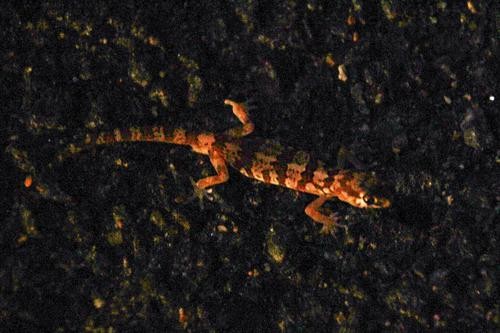Pachydactylus mariquensis latirostris
A species of Thick-toed geckos Scientific name : Pachydactylus mariquensis latirostris Genus : Thick-toed geckos
Pachydactylus mariquensis latirostris, A species of Thick-toed geckos
Scientific name: Pachydactylus mariquensis latirostris
Genus: Thick-toed geckos
Content
Description General Info
 Photo By tonyrebelo , used under CC-BY-SA-4.0 /Cropped and compressed from original
Photo By tonyrebelo , used under CC-BY-SA-4.0 /Cropped and compressed from original Description
Pachydactylus mariquensis latirostris is a remarkable creature in the world of herpetology, notable for its nocturnal tendencies and unique feeding patterns. This species thrives in arid habitats and, unlike many geckos, it primarily consumes hard-bodied arthropods. Ants in particular form a substantial part of its diet. Its sturdy body, highly adapted for this diet, demonstrates the deep evolutionary ties between diet and anatomical development.
General Info
Lifespan
10-12 years
Diet
Pachydactylus mariquensis latirostris primarily sustains on a diet of invertebrates, highlighting an inclination towards nocturnal insects. Specifically, it favours moths, spiders, and small beetles, reflecting its adaptation to nocturnal hunting patterns.
Appearance
Pachydactylus mariquensis latirostris is a smaller-sized gecko, with a squat body and creased, dry-looking skin. It is primarily brown with light tan and pale yellow spots distributed along its back, creating a distinctive pattern. It features a wide snout, thin legs, and clawed feet. Its tail is slightly bulbous at the base, tapering to a fine point. This animal's size, coloration, or patterning does not differ significantly due to age, gender, or subspecies.
Behavior
Pachydactylus mariquensis latirostris exhibits a primarily nocturnal lifestyle, feeding on invertebrates and small vertebrates. The species demonstrates distinct territoriality, often confining individualistic behavior within designated areas. Distinguished byexceptional climbing techniques, it uses its specially adapted toes outfitted with adhesive pads for navigation in its rocky habitat. Passive defence mechanisms include camouflage, with colouration blending seamlessly into the natural environs.
Population
Stable
Scientific Classification
Phylum
Chordates Class
Reptiles Order
Lizards and snakes Family
Common geckos Genus
Thick-toed geckos